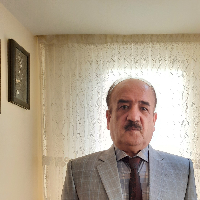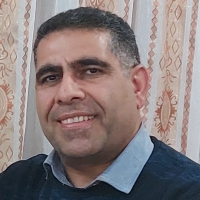Zoning of Desertification Intensity Based on the Groundwater Resources Destruction Criterion Using Madalus Desertification Model (Case Study: Area Around Lake Urmia)
The phenomenon of desertification refers to the process of destruction and devastation of natural ecosystems in arid, semi-arid and semi-humid arid regions, which leads to a decrease in biomass production and the emergence of soil destruction effects or erosion (Ekhtesasi et al., 2011: 14). Desertification occurs due to natural factors such as climatic variables and human activities (Binal et al., 2018: 10), (Collado et al., 2002: 121) and its impact on ecological processes is very high and complex, such as negative effect on plant characteristics (such as biomass, lands density and area covered by vegetation), soil biodiversity loss and reduction soil fertility, change in landscape patterns of arid areas at various geographical scales (Xu et al., 2009: 1738). Therefore, combating desertification is essential to ensure long-term soil and land exploitation in arid regions of the world. Destruction of water resources, both quantitatively and qualitatively, can lead to biomass depletion and eventually desertification. Groundwater quality is the result of all the processes and reactions that operate on water from the moment of condensation in the atmosphere until it is discharged from a well or spring.
1-2- Study area The study area included part of the Urmia catchment located in the northwest of Iran with a longitude of 44”0’ to 47”0’E and latitude of 37”0’ to 38”20’N, with an area of 14.395km2. The intersection of the mountain and the plain indicates the boundaries of the study area. (figure 1). Fig (1): The study area 2-2- Method of Preparing a map of desertification sensitive areas in a project entitled “MEDALUS” It was carried out by the European Commission, and the ESAS model was presented in 1999. In the Medalus method, four key criteria are evaluated: soil quality, climate quality, vegetation quality and management quality. Each criterion also has indicators that, in fact, form the layers of that criterion. In Iran, by calibrating the mentioned model, at first, the most important criteria affecting the desertification process are identified and scored based on descriptive-quantitative indicators. The score 1 is considered for the best conditions and the score 2 is considered for the worst conditions and for the average conditions the score between 1-2 is considered. In the next stage, the score of the indicators is investigated and using the geometric mean based on equation 1, the status map is calculated for each main criterion:(1) Ix = [(L1) × (L2) × (L3)…… .. (Ln)]1 / n Ix: The status related to each main criterion includes: soil status, climate status, vegetation status, erosion status, management status and groundwater status. L1, 2, …… n: Indicators under investigation for each criterion N: The number of indicators under investigation for each criterion In the Medallus model, the desertification risk map is obtained by emphasizing the groundwater criterion according to the following equation:(2) Criterion of water resources destruction= (groundwater drop × electrical conductivity ratio × groundwater chlorine ratio × sodium absorption ratio) 1.6 .
After preparing the weighted layers, the groundwater quality map was prepared using ArcGIs software environment. According to the obtained results in the southern half and southeastern of the case study area, groundwater has low quality because the four indicators of water electrical conductivity, chlorine ratio, sodium adsorption ratio, and water table level drop ratio have the highest ratio. So that the electrical conductivity ratio in these areas is in the high class and is about (2400-4600 dS / m), the chlorine ratio is in the middle class and is equal to (500-1033 mg / l), the sodium absorption ratio is in the very high class and is about (27-92 mg /l). In these areas, the groundwater table level has decreased about 50 cm per year (figure 2). Fig (2): Desertification intensity map with emphasis on groundwater criteria based on Medalus model.
The present research has been conducted with the aim of zoning the risk of desertification based on groundwater resources in the surrounding area of Lake Urmia in the time period from 2000 to 2018 using Medalus desertification model. According to the obtained results, 212 square kilometers of the total area of the case study are in the very severe desertification class, 338 square kilometers are in the severe desertification class, 1,708 square kilometers are in the moderate desertification class, 4,723 square kilometers are in the poor desertification class, and 7,414 square kilometers are in the no desertification class. The parts located in the south and southeast of the case study area have been affected more than other areas by the destruction of groundwater resources and subsequently the occurrence of desertification phenomenon. Because the four indicators of the water electrical conductivity ratio, the chlorine ratio, the sodium absorption ratio, and the water table drop ratio have the highest ratio. Alluvial aquifers adjacent to the lake have been exploited beyond their allowable capacity limit in recent decades, which along with the drought of the last decade has disturbed the balance of groundwater reserves and also the balance between saline and fresh water in alluvial aquifers. As a result, in some parts of alluvial aquifers near the lake, saline groundwater has infiltrated fresh water and affected its quality. On the other hand, with the increase of irregular abstraction of groundwater, the water level has risen in some areas and has caused desertification by reducing the ratio of soil ventilation. The high ratio of chlorine existing in groundwater is among the factors of soil salinity and a factor that limits the growth of vegetation in the case study area. The ratio of electrical conductivity of groundwater in the case study area is also significant due to reduced rainfall and increased evaporation ratio. This point has led to the destruction of soil structure and the creation of problems in lands drainage and has reduced and decreased the vegetation of the area quantitatively. The investigation of factors affecting the destruction of water resources showed that the geological factor and the presence of geological formations of the third period and quaternary alluvium, and agricultural and garden land use with the highest ratio of table level drop have had an important role in reducing groundwater quality and as a result, the desertification in the case study area.
- حق عضویت دریافتی صرف حمایت از نشریات عضو و نگهداری، تکمیل و توسعه مگیران میشود.
- پرداخت حق اشتراک و دانلود مقالات اجازه بازنشر آن در سایر رسانههای چاپی و دیجیتال را به کاربر نمیدهد.




